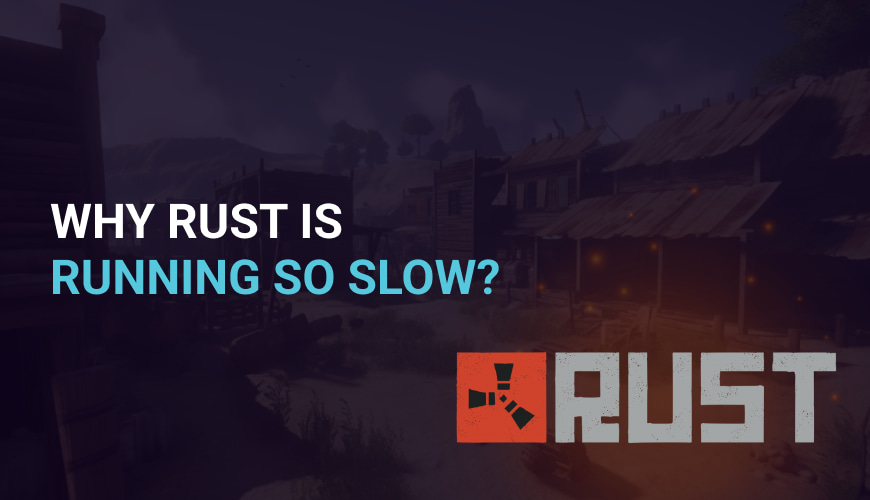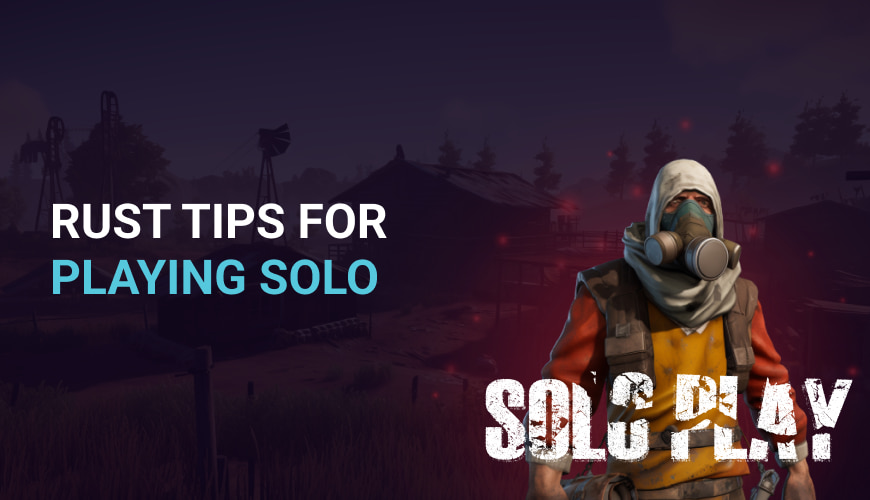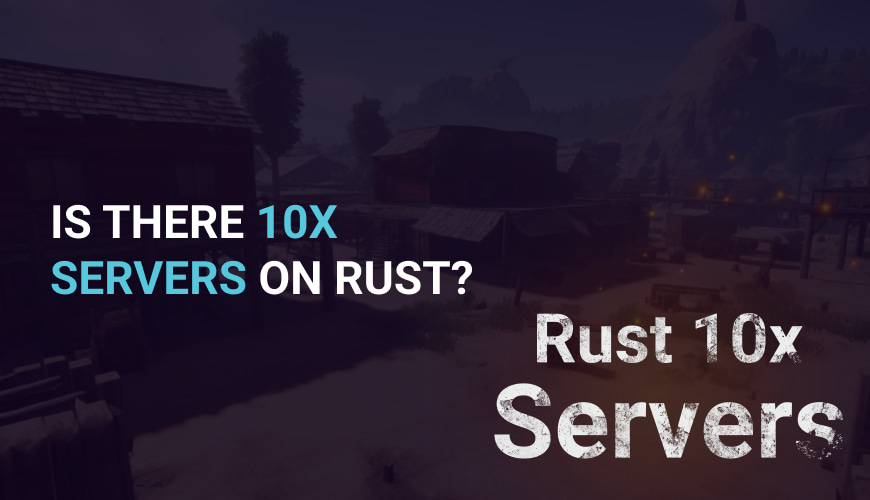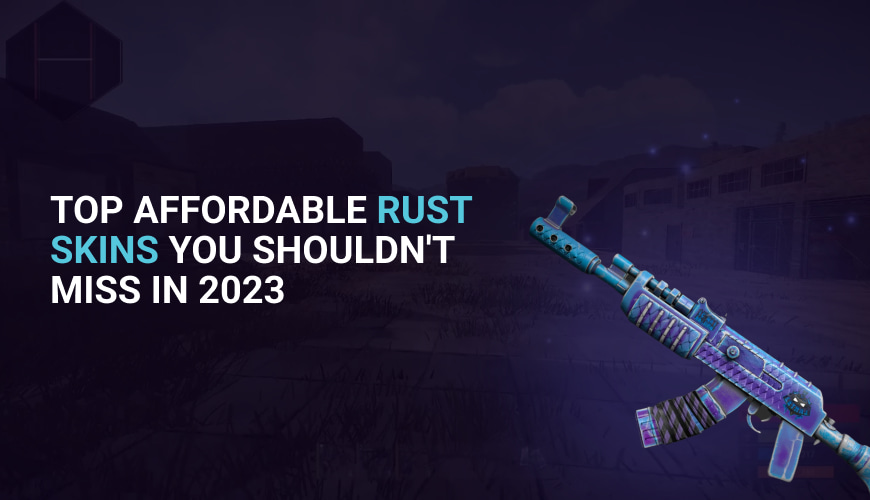In the ever-evolving realm of action gaming like TF2, DOTA and Rust, the last one has proven itself as a stalwart contender, enduring the test of time and solidifying its position as a formidable game. It has:
-
Expansive open world.
-
Intricate player-driven economy.
-
A web of complex interactions.
Rust promises an unparalleled and immersive gaming experience. It keeps players engaged for hours on end. But to truly get lost in its world and engage in intense battles, one crucial element is paramount. It's a smooth and consistently high frame rate.
This Mannco Store guide is a compass through the landscape of optimizing Rust's performance. It aims to boost Rust FPS to new heights. We'll embark on a journey to unravel the critical factors that influence performance. We will dissect the inner workings of the game's engine. And most importantly, we will equip you with practical solutions. It's to ensure you can maximize your gaming experience.
Identifying Performance Bottlenecks
Before diving into the intricate world of optimization techniques, it's imperative to gain a profound understanding of the myriad factors that can potentially bottleneck your game's performance within the immersive realm of Rust.
This unique survival video game offers a captivating gaming experience. Yet, to immerse in its battles, a seamless and high frame rate is the key to unlocking the full potential of Rust. In this block, we will delve into the multifaceted dimensions of performance optimization. We will tell you about how to increase FPS in Rust.
Analyzing Code Efficiency
One of the most critical performance factors in Rust is code efficiency. Rust's game engine is complex and resource-intensive. It makes it crucial to ensure that your hardware can efficiently run the game:
-
CPU Usage. Rust is a CPU-intensive game, and a lackluster CPU can often be a bottleneck. Before trying any optimization techniques, check if your CPU is up to the task. If it's outdated, upgrading to a more powerful one can significantly boost your FPS. This is the first step into how to not lag in Rust.
-
GPU Performance. Your graphics card plays a pivotal role in rendering Rust's vast landscapes. Make sure your GPU drivers are up-to-date. Outdated drivers can cause graphical glitches and low FPS. Adjust your in-game graphics settings to match your GPU's capabilities.
-
Network Latency. Rust is an online game, and network latency can impact your gaming experience. A slow or unstable internet connection can lead to lag and FPS drops. Check your internet connection and consider using a wired connection for stability.
-
Game Updates. Rust receives frequent updates and patches. If you experience a sudden drop in performance after an update, it might be due to an issue on the game's end. Keeping an eye on community and official forums is another way how you can reduce lag in Rust.
-
Overheating. Overheating can significantly affect your gaming performance. Ensure that your CPU and GPU are adequately cooled to prevent thermal throttling. Dust and debris can also accumulate inside your computer. So clean it periodically to maintain optimal cooling.
-
Background Applications. Running resource-intensive background applications can impact your game's performance. Close unnecessary applications and processes to free up system resources for the best Rust settings 2023.
-
Driver Updates. Keeping your system's drivers updated is essential. It's not just for your GPU but for all system components. Sometimes, a simple driver update can resolve performance issues.
-
DirectX Version. Rust uses DirectX for graphics rendering. Ensure that your system has the latest version of DirectX installed. You can download it from the official Microsoft website.
Memory Management Matters
Diving into Rust's performance, memory management emerges as a pivotal facet. Efficient memory allocation and use stand as paramount concerns. Inefficient practices can spell FPS drops and, in the worst cases, game crashes. In the next blocks, we will embark on a journey into the realm of Rust's memory management.
We will uncover the intricacies of allocating and handling memory resources. We will explore techniques and practices that will not only optimize memory usage. But they will also enhance your gaming experience. This Rust boost FPS ensures Rust is smooth and uninterrupted.
Optimizing Memory Usage
For this, consider:
-
RAM. Rust can be memory-hungry, so ensure that your system has enough RAM to run the game smoothly. At a minimum, aim for 16GB of RAM. If you experience FPS drops or crashes, consider upgrading to 32GB.
-
Pagefile. Windows users should configure their pagefile settings. The pagefile serves as virtual memory and can impact game performance. Set it to a fixed size to prevent Windows from dynamically adjusting it.
-
Texture Quality. Lowering texture quality reduces the amount of VRAM required by the game. This is one of the best ways how to not lag in Rust. Adjust this setting to match your GPU's VRAM capacity.
-
Garbage Collection. Rust uses a garbage collector to manage memory. If you experience stuttering during gameplay, consider allocating more memory to the garbage collector in Rust's launch options. The command is -gc.Bytes 16384 to set it to 16GB.
-
Close Unnecessary Programs. Ensure you close background applications consuming RAM. For example, web browsers. Closing them can free up more memory for Rust.
-
Virtual Memory. Consider adjusting your virtual memory settings. Having ample physical RAM is essential. But setting an appropriate virtual memory size provides extra memory support when needed.
-
Memory Speed. The speed of your RAM modules can impact Rust's performance. Faster RAM modules can provide a slight but noticeable boost in system performance and this can be one of the ways how to reduce lag in Rust.
Case Studies and Solutions
To gain a deeper insight into the art of enhancing FPS in the Rust gaming universe, we embark on an exploration of:
-
Real-world case studies.
-
The ingenious solutions forged by the gaming community.
These anecdotes offer invaluable lessons on squeezing every ounce of performance from your gaming rig. They ensure your journey through Rust is not only a visually stunning experience but a fluid one as well. The collective wisdom of seasoned players forms a rich tapestry of strategies. They can elevate your gaming experience to new heights and set the best Rust settings 2023.
Real-world Examples of Rust Optimization
|
Reducing View Distance |
In Rust, rendering distant objects can strain your GPU. Many players have reported improved performance by reducing the view distance in settings. Lower it to a point where you can comfortably spot other players. While considering maintaining a stable FPS can make a noticeable difference. |
|
Launch Options |
Rust allows you to set launch options. They can significantly impact your game's performance. Players often experiment with different launch options to find the best Rust settings 2023. Some popular launch options include -high. It sets the game's priority to high. And -max, which limits the amount of memory Rust uses. These can help divide system resources more efficiently. |
|
Overclocking |
Overclocking your CPU and GPU can provide a considerable boost in performance. But this should be done cautiously. It can increase heat generation and damage your hardware if not done correctly. Research overclocking techniques and tools specific to your hardware and proceed with caution. |
|
Resolution Scaling |
Lowering resolution or using resolution scaling is another way how to increase FPS in Rust. And it's without sacrificing too much visual quality. Experiment with these settings to find a balance that suits your preference. |
|
Plug-ins and Mods |
Rust's modding community has created various performance-enhancing plug-ins and mods. Some of these mods optimize the game's visuals. Or they introduce features to reduce the load on your system. Explore the Rust modding community to find options that suit your needs. |
|
SSD vs. HDD |
Rust can benefit from faster storage solutions. If you're running the game from a traditional HDD, consider upgrading to SSD. This can reduce loading times and stuttering, resulting in a smoother gaming experience. |
|
Graphics Settings |
Experiment with in-game graphics settings to boost Rust FPS. It's to find the right balance between performance and visuals. Lowering settings like shadow quality, water quality, and anti-aliasing can significantly impact FPS. |
|
Resolution and Display Mode |
Reducing your display's resolution and using fullscreen mode can help maximize FPS. Lower resolutions are easier for your GPU to handle. |
|
Bi-weekly Wipe Servers |
In Rust, server performance can also impact your gaming experience. Some servers wipe their data every two weeks to maintain better performance. Consider playing on such servers if you're looking for a smoother experience. |
|
Reducing In-Game Clutter |
In Rust, clutter can be a performance killer. Reducing in-game clutter can free up system resources and this is how to make Rust run faster. It's a trade-off between aesthetics and performance. |
|
Tweaking Graphics Drivers |
Explore the settings within your graphics control panel. For Nvidia users, the Nvidia Control Panel offers various options. They're to optimize your GPU's performance. Adjust settings like Power Management Mode. It's to ensure your GPU is running at maximum performance when needed. |
|
Game-Specific Optimization |
Some hardware manufacturers offer game-specific optimization tools. For instance, Nvidia provides the GeForce Experience. It can automatically adjust in-game settings for optimal performance. Use such tools to ensure your system is tuned for Rust. |
|
Reducing Object Quality |
Lowering object quality settings can reduce the complexity of in-game objects. This change can lead to a significant boost Rust FPS. It's especially in crowded areas or during intense battles. |
|
Streaming Settings |
If you stream, you can optimize your streaming settings to cut the impact on performance. Use hardware-accelerated encoding. And choose lower encoding presets to reduce the load on your CPU. |
|
Server Selection |
The server you choose can also affect your in-game experience. Some servers may have a better hardware setup or lower player counts. It results in smoother gameplay. Experiment with different servers. It's to find the one that offers the best performance for your location and playstyle. |
|
Game-Specific Performance Mods |
Rust's modding community is a treasure trove of performance-enhancing mods to boost Rust FPS. From reducing the number of visible items on the ground to enhancing the game's memory usage, these mods can provide substantial performance improvements. Be sure to research and use these mods responsibly. Some servers may have specific rules about mod usage. |
|
Updating the Game |
It may seem obvious. But ensuring you have the latest version of Rust can make a significant difference. Game updates often include performance enhancements and bug fixes. Those can improve FPS and stability. |
|
Monitoring Tools |
Use hardware monitoring tools. It's to keep an eye on your system's performance while playing Rust. MSI Afterburner, HWMonitor, or Task Manager can help you identify resource hogs. |
|
System Cleanup |
Over time, your operating system can accumulate temporary files and registry errors. They may impact performance. Regularly performing system cleanup and maintenance is how to make Rust run faster and keep your OS running smoothly. |
|
Community Forums and Support |
Never underestimate the power of the gaming community. Rust's community forums and discussion boards are excellent resources for finding solutions. Many experienced players and tech-savvy individuals share their tips. Take part in discussions and ask questions to learn from the community's expertise. |
Conclusion
Boosting your FPS in Rust is a common goal among gamers. And it's a quest that involves a combination of hardware upgrades and in-game tweaks. Identify performance bottlenecks. Streamline code efficiency. And optimize memory usage. This way, you can significantly elevate your gaming experience.
It's crucial to keep in mind that each gaming system is unique. And the ideal settings for your setup may differ from others. Experimentation is key. It allows you to find that sweet spot between performance and visual quality. Whether you're adjusting view distances, fine-tuning launch options, or investing in hardware upgrades, the ultimate objective remains constant: conquering Rust's virtual realm with top-notch FPS for an immersive gaming journey.
In essence, your quest for higher FPS in Rust should be a blend of performance and visual brilliance. Rust's expansive and ever-evolving world beckons to be explored to the fullest. And with the right optimization strategies, you can relish its challenges. Embrace the techniques and advice highlighted in this blog post. And customize them to suit your specific hardware and gaming preferences.




0 comments
Add a comment